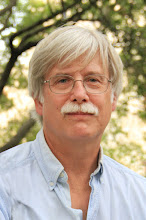A year ago this August I capped my stream embankment creation with three spindly toadflax plants as a backdrop for the streamside rocks. Good to zone 4 with perfectly supple stems to create some movement in the breeze, and, if I had read more of its bio, prone to spreading. Toadflax is a European transplant, adapted to Mediterranean climate, and just the thing to fringe a patio striving for echoes of Tuscany or the Peloponesian pennisula.
Then spring came and the steady emergence of all those perennial investments (a perennial gardener is one who is perennially investing). Except the toadflax. In their designated parish nothing was emerging from the winter kill stem clumps. So I wrote them off and later deposited some husker penstemmon, which didnt so much flow as slump before the wind. This was after vainly searching the nurseries for toadflax and finally deciding I wouldn't be suckered again into a plant of ambivalent constitution (like the butterfly bush).
Come July the Japanese beetles arrived with an appetite for our Lindens, willows, roses and primrose. And as they multiplied I noticed some spires erupting all over the streambank, and the pond beds and around the porch stairs: the progeny of the late toadflax. Hundreds of shoots, crowding the penstemmon, and poking up through the primrose and cranesbill. The legacy of those half dozen stems making music with the breeze.

Purple toadflax, Linaria purpurea native to the Mediterranean basin and cultivated as a garden plant in North America. Grows to three feet when mature. Purple to pink flowers appear in mid-summer. Prolific self-seeder. Medicinal use as a laxative or an ointment to treat hemorrhoids and ulcers.
There are other wonders, testimonies to nature coloring outside the gardener's preconceptions. Those butterfly bushes? My first three did expire, seemingly, but a year after moving a dead stalk to my island bed one came back. In that same bed another butterfly bush, different variant, appeared one spring, and who knows how that was parented?
Somewhere in this is a lesson on church planting and revitalization. A money stream, deep research, creative and inspiring leadership, and support from local churches is no guarantee the plant will take root and thrive. Sometimes a congregation takes root in unexpected but fertile soil; or reemerges after being given up for lost. Careful planning and resources do work, as seen every Sunday at Nuestra Senora de Guadalupe in Waukegan where worshippers fill every pew and spill out into the narthax and beyond,the result of a partnership in planting between area churches and the diocesan office. And now in Grayslake at St. Andrew's Episcopal Church the congregation of Nuestra Senora has provided the rootstock for an emerging Hispanic congregation there, one that was not part of our five year strategic plan in 2003.
So with the garden I continue to plot out arrangements; match plants to sun, and soil, and drainage; and, hopefully more often, allow more space for resurgent toadflax.

No comments:
Post a Comment